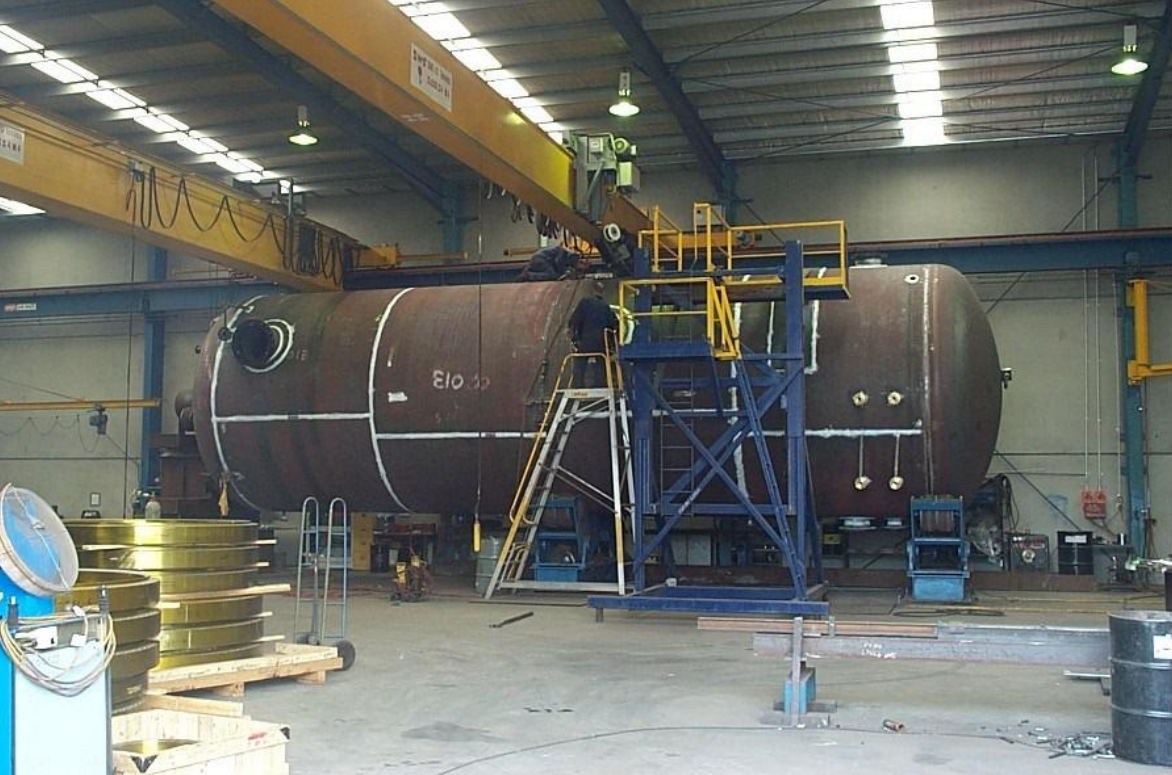
- (03) 5909 8218
- enquiry@fusionweld.com.au
Remote Visual Inspection: Pressure Vessel Maintenance
April 22, 2025

Streamlining pressure vessel maintenance, Fusion-Weld Engineering optimises processes with remote visual inspection and advanced tech solutions.
Remote visual inspection (RVI) is a sophisticated method used to maintain pressure vessels by providing detailed visual assessments without physical intrusion. Detecting potential issues at an early stage allows for proactive maintenance, reducing the risk of unexpected failures, minimising downtime, and ensuring the long-term efficiency and reliability of the system.
Challenges and Solutions in Remote Visual Inspection for Pressure Vessels
Common limitations in RVI include restricted access and visibility, which can hinder thorough inspections. Modern technology overcomes these challenges by employing advanced imaging systems that provide high-resolution visuals, even in hard-to-reach areas.
Advanced software solutions also enhance data analysis, allowing for more accurate assessments of vessel conditions. These technological advancements ensure that RVI can be conducted effectively across various industries.
Advanced Tools and Technologies in Remote Visual Inspection
RVI relies on a variety of advanced tools and technologies to enhance its effectiveness. These technologies ensure that inspections are conducted efficiently and accurately, even in challenging environments. Here are some of the key tools and technologies used in RVI:
• High-Resolution Cameras: These cameras provide detailed images of internal vessel surfaces, allowing for precise defect detection. They are often equipped with zoom capabilities and adjustable lighting to enhance visibility.
• Drones: Drones are used for external inspections, offering flexibility and reducing the need for scaffolding or cranes. They can capture images from multiple angles, ensuring comprehensive coverage.
• Robotic Systems: Robotic systems are designed for internal inspections, navigating through complex vessel geometries with ease. They can be equipped with manipulator arms for sampling or repair tasks.
• Thermal Imaging Cameras: These cameras detect temperature variations, which can indicate potential issues such as leaks or blockages. They are particularly useful for inspecting vessels in operation.
• Ultrasonic Testing Equipment: This equipment uses sound waves to measure material thickness and detect defects, providing quantitative data on vessel integrity.
• Laser Scanning: Laser scanning creates detailed 3D models of vessels, aiding in the identification of structural anomalies or corrosion.
• Data Management Software: This software organises and analyses inspection data, facilitating trend analysis and predictive maintenance strategies.
Enhancing Pressure Vessel Maintenance
An improved method of maintaining pressure vessels that offers increased efficiency and safety is remote visual inspection. Fusion-Weld Engineering provides comprehensive in-service inspection and certification services, leveraging advanced technologies to ensure the integrity of pressure equipment.
Navigate through our vessel design and in-service inspections and learn how our expertise can support your vessel maintenance needs.
Discover our extensive portfolio of specialised products and services, designed to deliver high-performance, reliable pressure equipment solutions across multiple industries.
Know more about RVI and its other capabilities through this content: What is Remote Visual Inspection (RVI)? Offering Better Solutions To Customers & Users
Contact Details
Fusion - Weld Engineering Pty Ltd
ABN 98 068 987619
1865 Frankston Flinders Road,
Hastings, VIC 3915
Ph: (03) 5909 8218
Optimized by NetwizardSEO.com.au
Recent Posts
- Compressed Hydrogen Storage Vessels: Material Selection, Design & Australian Standards
- Welding QA/QC in Oil & Gas Pressure Vessel Fabrication – Ensuring Code Compliance
- AS1210 vs ASME VIII Pressure Vessel Code: Key Differences for Australian Projects
- Mitigating Hydrogen-Induced Cracking in Pressure Vessels: Engineering and Material Strategies
- Storage Tank Solutions Australia: Field-Erected, Prefabricated & Self-Bunded Explained
- Reducing Environmental Risks: Self-Bunded Tanks in Australian Oil & Gas Operations
- Precision in Production: How Pressure Vessels Are Manufactured for Industrial Safety
- Shell & Tube Heat Exchangers: Improve Thermal Control & Energy Recovery in Petrochemical & Pharmaceutical Plants
- In-Service Inspection for Compressed Air Receivers for Power Plant Shutdown Prevention
- Power Plant Pipe Spooling Fabrication – Get Rapid, Code-Compliant Spools Ready for Installation
- Field Erected Tanks: Safe, Reliable On-Site Fuel Storage Solutions in Australia
- Custom Pressure Vessel Fabrication for Flammable Gases
Posts 2025
- Compressed Hydrogen Storage Vessels: Material Selection, Design & Australian Standards
- Welding QA/QC in Oil & Gas Pressure Vessel Fabrication – Ensuring Code Compliance
- View all articles…
Posts 2024
- Large Process Vessels: Optimising the Design for Maximum Efficiency [2025]
- Pressure Equipment Management System Installation: Detect Equipment Faults Early
- View all articles…
Posts 2023
- Pressure Piping System Inspection: A Gift of Safety for the Holidays
- Deaerator Inspections by Fusion-Weld Engineering and How They Reduce System Downtime
- View all articles…
Posts 2022
- How Fusion Weld Keeps Up With AS-NZS ISO 9001:2008 Standard
- Boiler Equipment Safety Inspection During the Summer Season
- View all articles…
Posts 2021
- Avoid These Factors and Practices that Contribute to Sealing Damage in Pressure Vessels
- Do's And Don'ts Of Industrial Boiler Inspection And Maintenance From Fusion-Weld
- View all articles…
Posts 2020
- What are the Risks and Hazards Involved in Pressure Vessel Equipment?
- How to Know if Your Pressure Equipment Needs Repair or Replacement?
- View all articles…
Posts 2019
- Factors that Contribute to Pressure Vessel Failure
- Pressure Vessel Regulations in Australia: What are the Mandatory Requirements?
- View all articles…
Posts 2018
- Pros and Cons of Spherical vs. Cylindrical Pressure Vessels
- What are the Different Hazard Levels in Pressure Vessels?
- View all articles…
Posts 2017
- Transportable Pressure Vessels: The Importance of Inspection and Safety Checks
- Fracture Mechanics and Stress Analysis of Cracks in Pressure Vessels
- View all articles…
Posts 2016
Posts 2015
- What Are Deaerators & Feedwater Vessels?
- Precautions and Safety for Compressed Air Receiver Vessels
- View all articles…
Posts 2014
- Demonstrating In-process Inspection Procedures
- Static Grounding Practices and Standards
- View all articles…